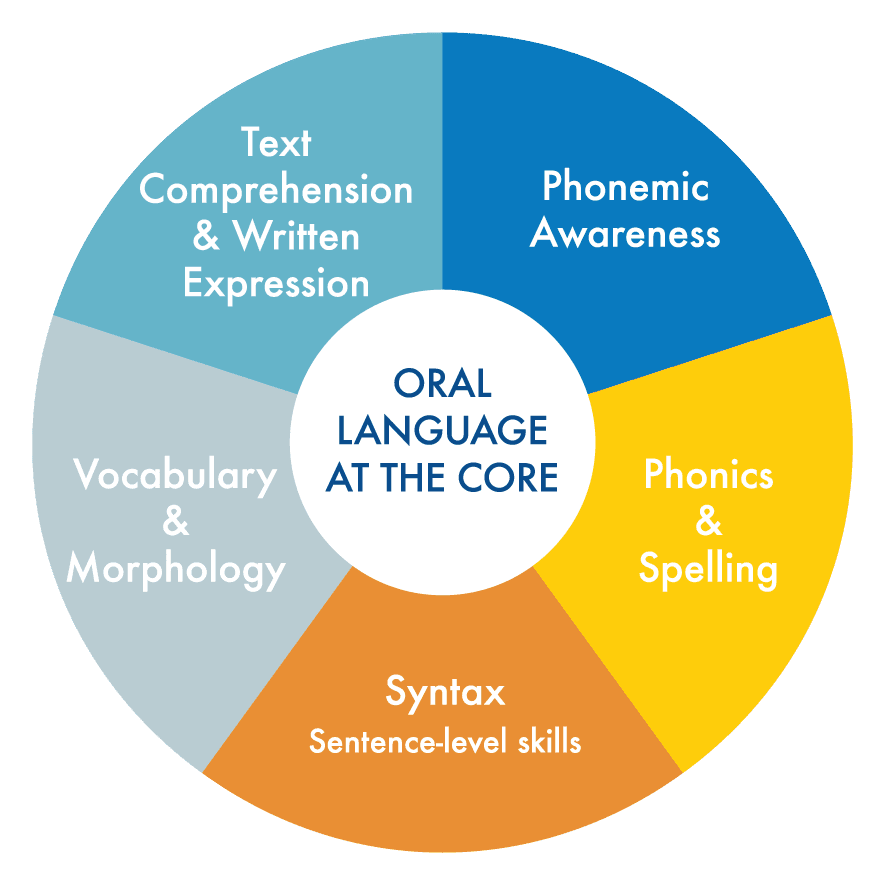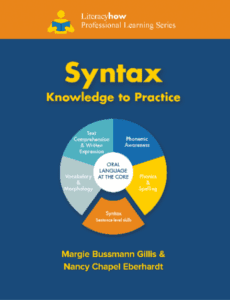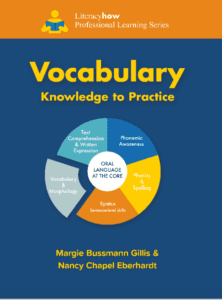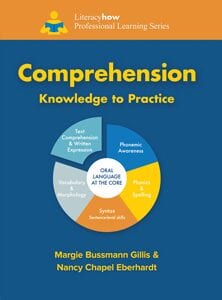
Spelling
What is it?
Spelling, also referred to as encoding, is reciprocal to decoding. Spelling turns speech into writing (i.e., speech-to-print). In order to spell, we must first hear the individual sounds in a word, and then write the letter(s) that represent the sounds. When reading, we go from print to speech.

Spelling
What is it?
Spelling, also referred to as encoding, is reciprocal to decoding. Spelling turns speech into writing (i.e., speech-to-print). In order to spell, we must first hear the individual sounds in a word, and then write the letter(s) that represent the sounds. When reading, we go from print to speech.
Frequently Asked Questions
What is invented spelling and is it OK to encourage my young students to use invented spelling in their writing?
Before children learn to read and spell formally, they use “invented spelling” as they experiment with the written code. As such, it is appropriate for students who have not had explicit spelling instruction to write using “invented spelling”. In fact, it is a very powerful practice for preschool and kindergarten children—one that encourages children to use their ‘phonological awareness’ and print knowledge to label and write words. Look at this example. What did this child write? Invented spelling is also a great informal diagnostic tool for assessing a child’s phonological (sound) and orthographic (writing/spelling) awareness.
Should I give my students a weekly spelling test?
While it’s valuable to assess students’ mastery of spelling patterns, weekly spelling tests are often misused for this purpose. Many teachers and parents report that students do well on spelling tests, but soon forget the words, as reflected in their written work. These students didn’t master the spelling; they simply memorized the words for the test. Spelling is a connection-forming process—that is, sounds are linked to the spelling (orthographic) pattern, both of which are linked to the word’s meaning. As these three linguistic connections are made and solidified, students are well on their way to becoming fluent readers and spellers. See Assessments to Inform Instruction.
Teacher Tip: sequence sounds
When teaching the spelling patterns, follow the same developmental sequence used for decoding instruction. Teach short vowel sounds, for example, before introducing long vowel sounds, which are more variable. Short vowels are the most transparent (regular) sounds to spell.
Teacher tip: Aim for Accuracy and Mastery
The goal of spelling instruction—like decoding instruction—is to develop accuracy. This leads to automaticity. Frequent encounters with words will support students’ ability to spell them accurately in written work.
Be sure that your students have mastered the spelling pattern before moving on. See the Developmental Stages in Spelling.
Teacher tip: decode,encode
Teach spelling and decoding together. After teaching a phonetic element for decoding, have students practice reading the pattern in text, then dictate some of those same words to practice encoding. Include a sentence or two to give students practice writing the words in context. Dictations can also serve as an informal assessment to determine their mastery of the patterns that you have previously taught.
Teacher tip: ELLs and Invented Spelling
For English Language Learners, use invented spelling as a window to the perception of English sounds. For example, even if a Spanish-speaking child has not received Spanish letter/sound instruction, there may still be a phonemic influence of Spanish on English spelling (Raynolds & Uhry, 2010).
Teacher tip: Practice Writing and Reading
Provide plenty of writing practice. Students will spell words more accurately and automatically if they write words frequently. Encourage them to read! Avid readers tend to be better spellers because they see the words in print in multiple contexts and have well-defined mental images of the words.
Teacher tip: Promote Spelling Accountability
Hold students accountable for spelling words correctly in their written work. Many teachers do not penalize students for misspellings in their writing. If you have explicitly taught the spelling pattern, students should be expected to spell the words accurately. If not, they will continue to spell the words incorrectly.
Read More to Learn More
- Berninger, V.W. & Fayol, M. (2008). Why spelling is important and how to teach it effectively. Encyclopedia of Language and Literacy Development (pp. 1-13). London, ON: Canadian Language and Literacy Research Network.
- Gillis, M.B., and Moats, L., Theme Editors. (Summer 2020). The role of phonology and language in learning to read. Perspectives on Language and Literacy 46 (3).
- Herron, J., & Gillis, M. B. (Summer 2020). Encoding as a route to phonemic awareness and phonics: A shift in literacy instruction. Perspectives on Language and Literacy 46 (3), 17-22.
- Malatesha Joshi, R., et al. (Winter 2008-2009). How words cast their spell. American Educator, 6-16, 42, 43.
- Moats, L. How spelling supports reading. (Winter 2005-2006). American Educator 29 (4), 12-43.
- Oulette, G. & Sénéchal, M. (July/August 2008). Pathways to literacy: A study of invented spelling and its role in learning to read. Child Development 79 (4), 899-913
Tips for Principals: Success beyond speling tests
Discourage teachers from using weekly spelling tests as an instructional practice. (See FAQ). Instead, encourage them to follow the teacher tips above.
Tips for Principals: Reading + Spelling Reinforces Patterns
Be sure that reading and spelling are taught together. They are mutually beneficial so this will create more opportunities for students to practice applying common patterns.
Literacy How Professional Learning Series
The Literacy How Professional Learning Series translates the latest reading research into how-to instruction. The Knowledge to Practice book Series—Phonemic Awareness and Phonics, Syntax, Vocabulary, and Comprehension—is based on the current and comprehensive Literacy How reading model. It draws upon the authors’ decades of expertise and experience working with thousands of general and special education teachers. The Series emphasizes Pre-K-3rd grade conceptual and skill development. Teachers of older emerging or struggling readers will also find these tools useful.

Phonemic Awareness and Phonics—the keys to breaking the code!

Syntax is essential—even for beginning readers!

Vocabulary knowledge is essential for effective comprehension!

Comprehension is the goal of reading—even for beginning readers!